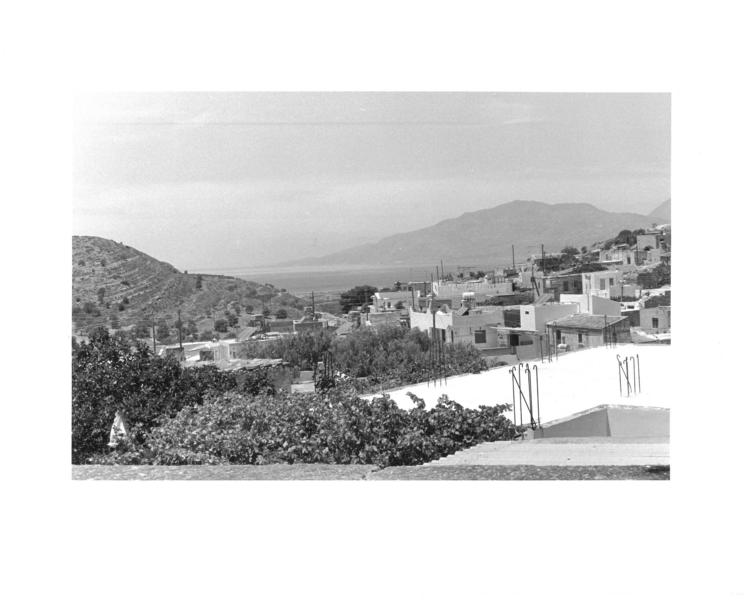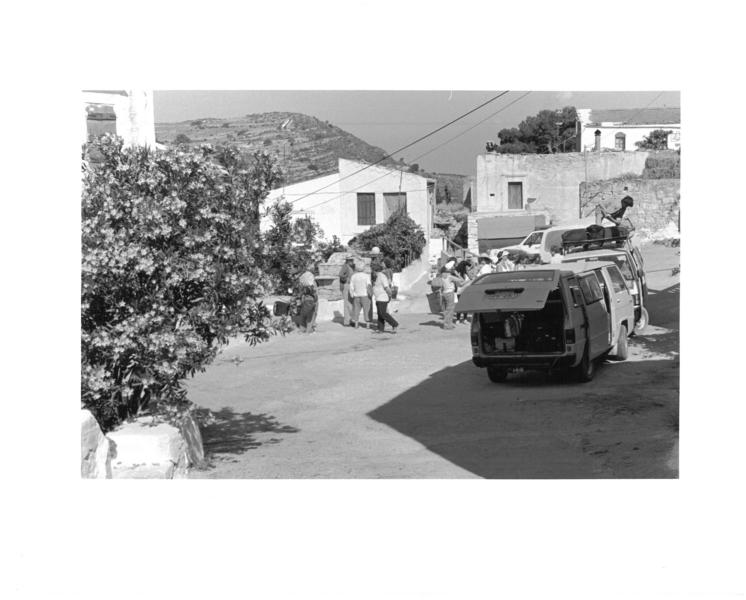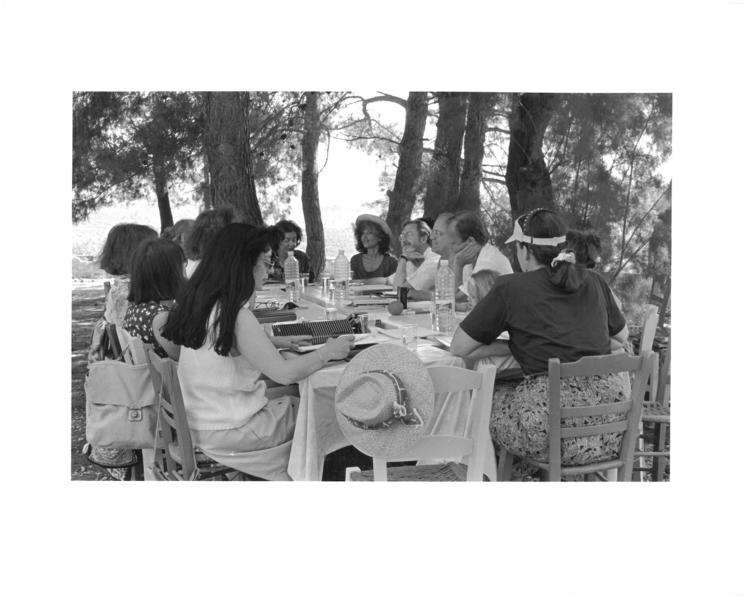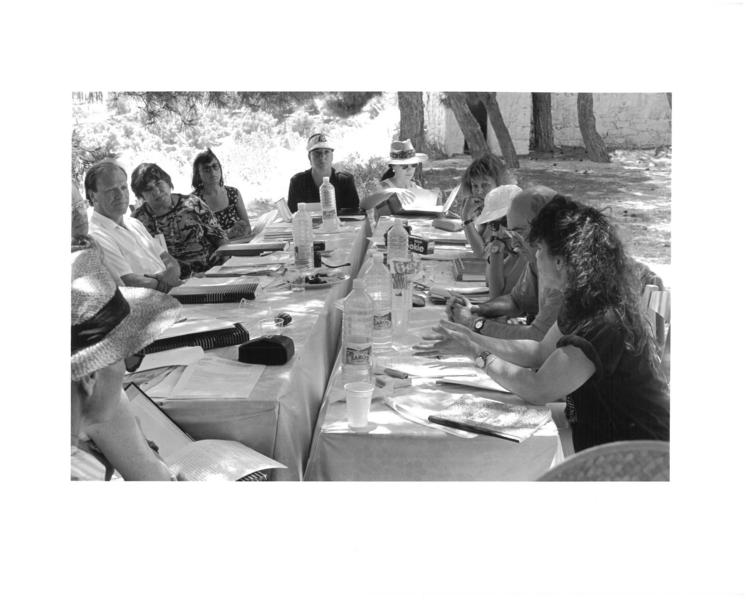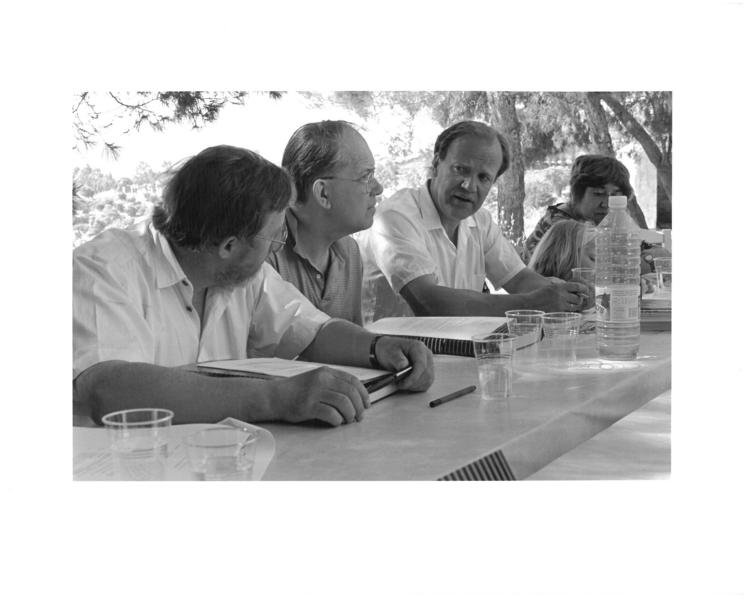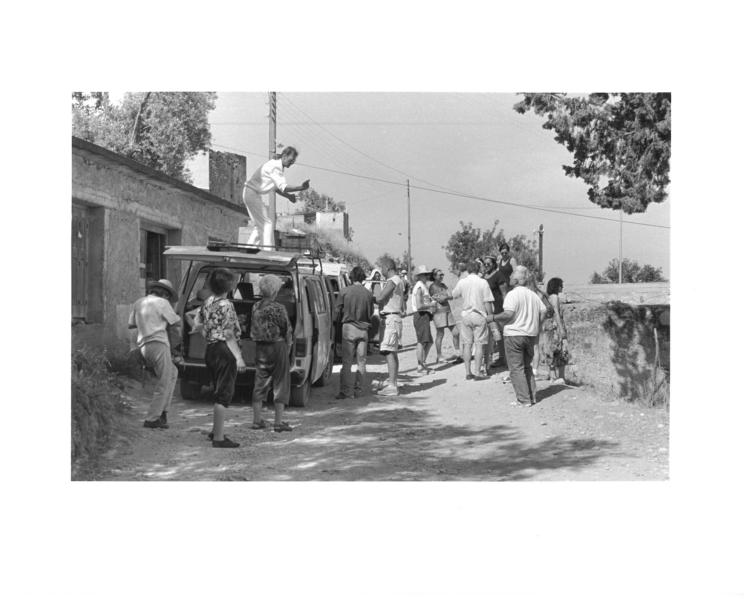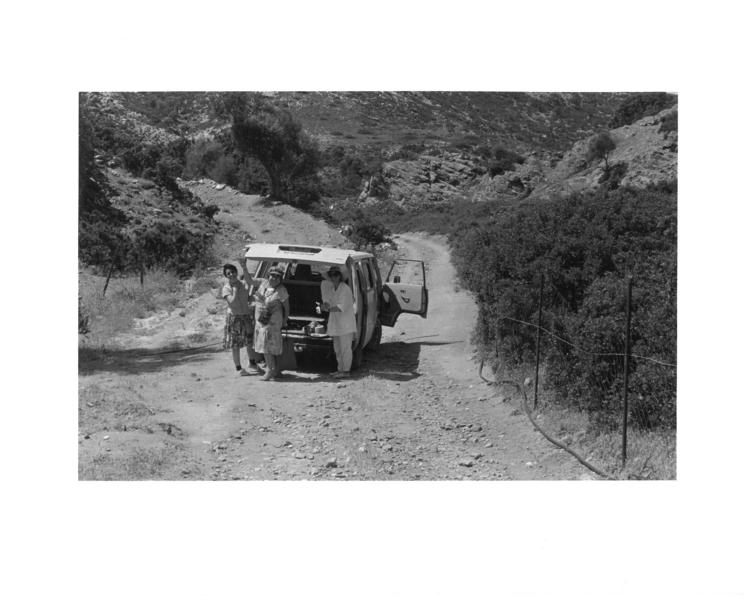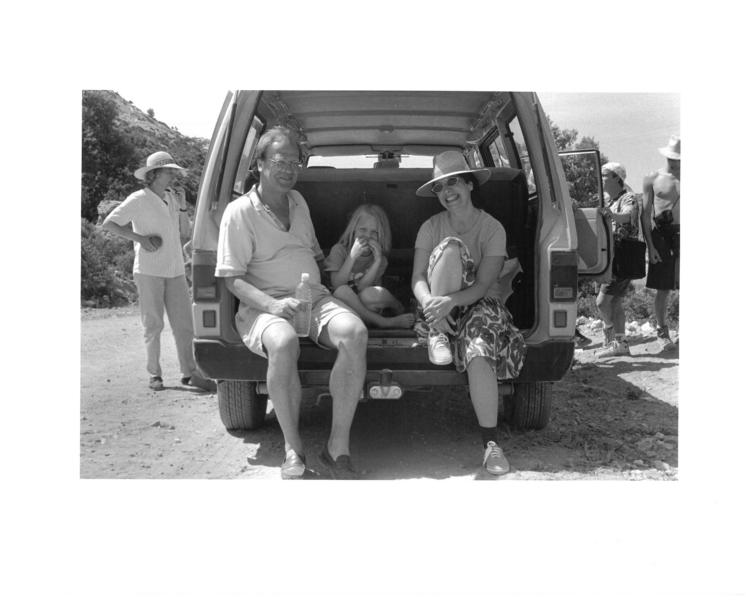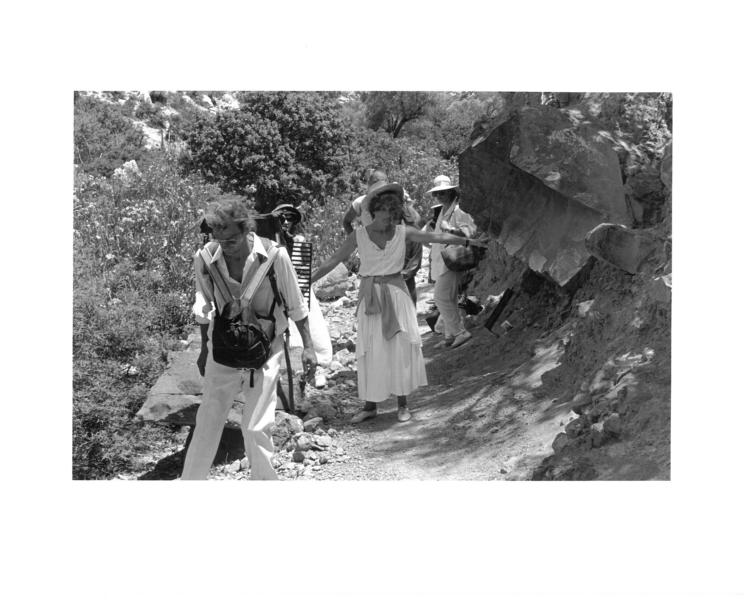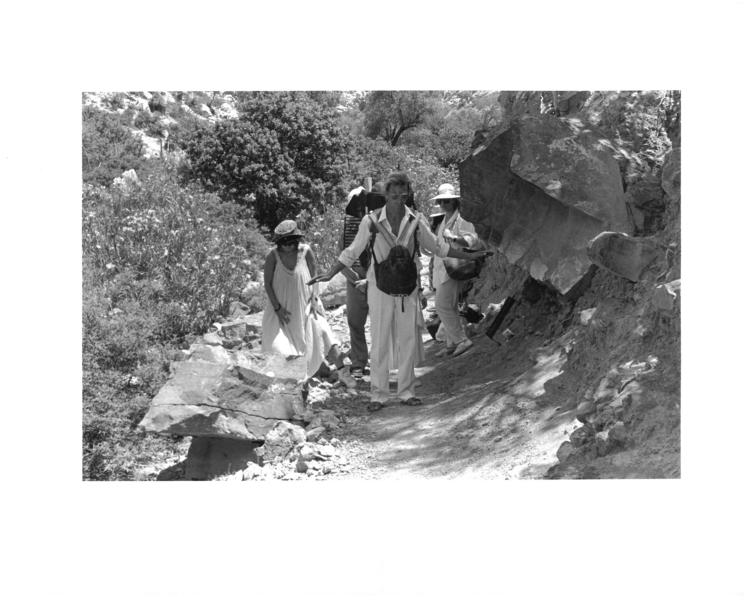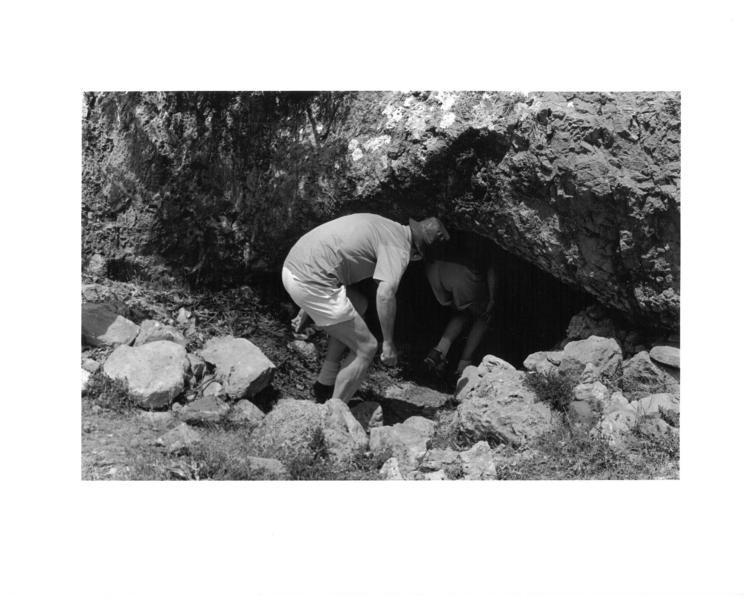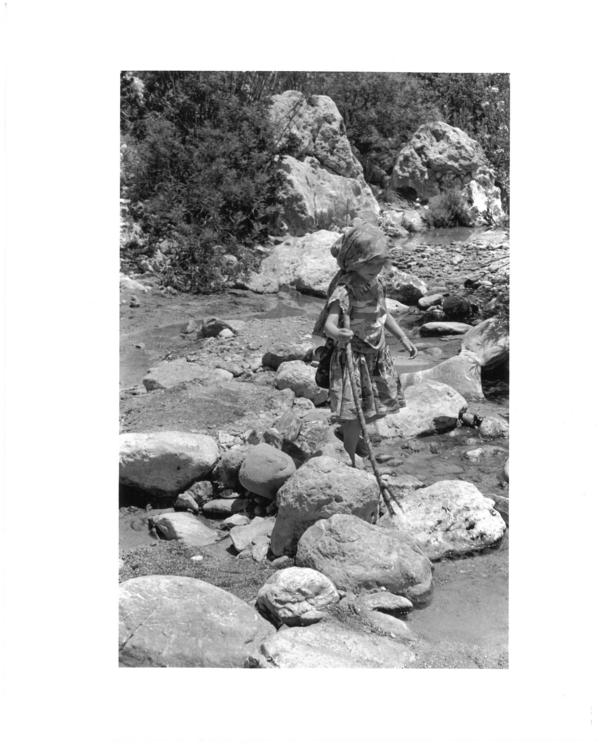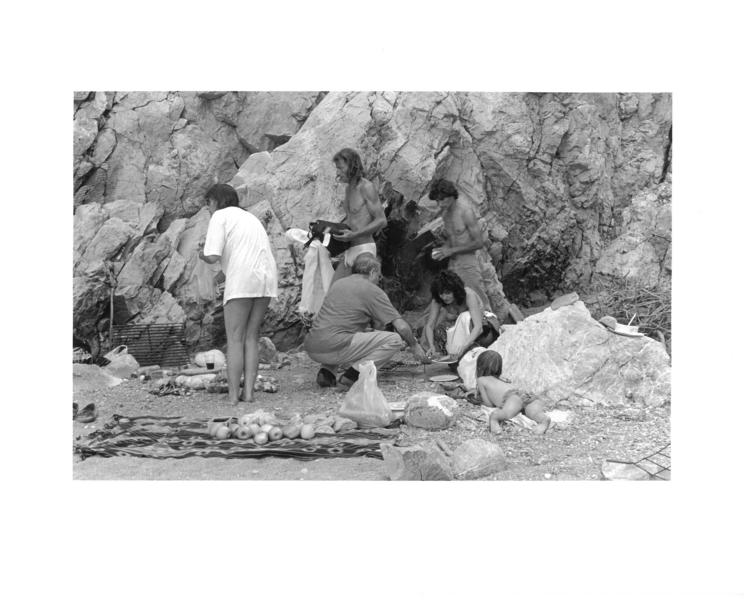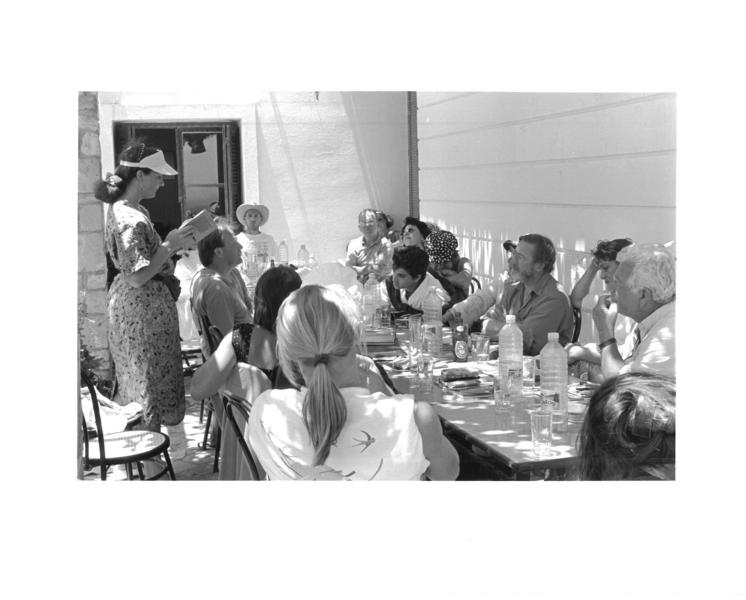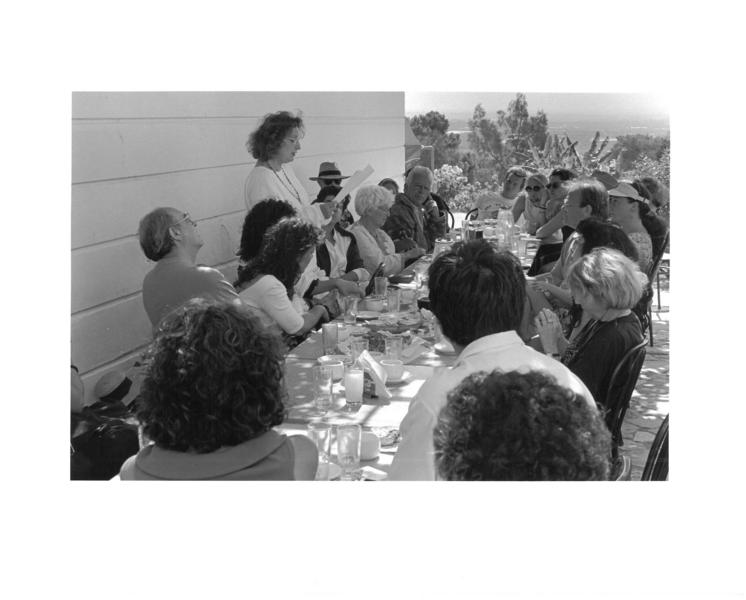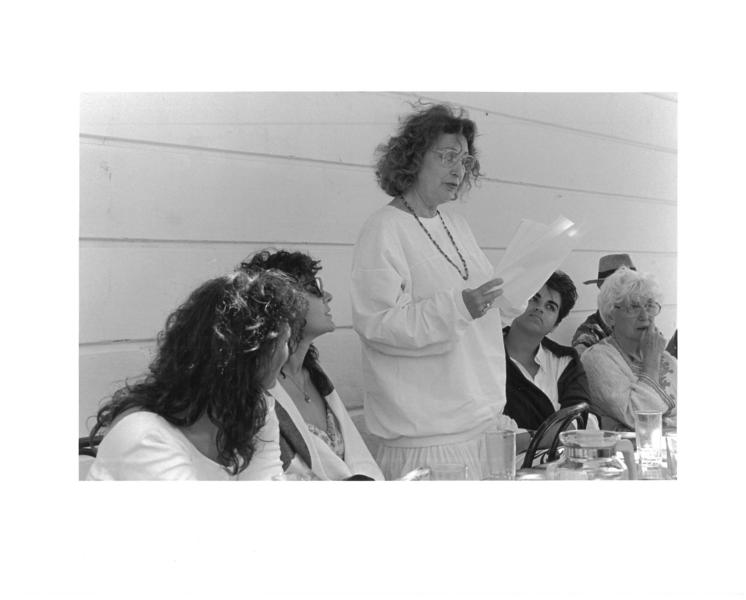Program and concept: myth of experience
The key aim was to prepare the poets for the Fifth Seminar, Cultural actions for Europe 1994 to be held after the event in Kamilari, Crete, in Athens, June 3 - 5, 1994, with a follow-up on Aegina where a poetry reading took place underneath the tower Sunday late afternoon.
Kamilari - village near Phaistos/Crete Photo: Elena Sheehan 1994
Arrival in Kamilari, Crete 1994
Arrival of the poets
Poetic discourse
Discussion on the grounds of the old school of Kamilari
If only hats could sing, while winds whisper through the trees, it would be possible to recall what were back then the 'Brennpunkte der Zeit': the burning fever of those times.
Maja Panajotova drew upon the example of Manolis, the bridge builder, to illustrate a common myth existing in the Balkan countries.
The story goes as follows: there was this bridge builder who attempted together with his crew construct a bridge, but every time when they tried those difficult vaults, the bridge would collapse. Frustrated by this repeated failure, he heard that if one woman could be sacrificed, the bridge would be stabilized from its foundation upwards by throwing her in with the mortar. Every day the women of the men would come around 11 o'clock to bring something like a secon breakfast. So the bridge builder instructed his men not to tell it to their wives for they would take the first woman to arrive next day as the one to be sacrificed. Of course, all the men warned their wives except the bridge builder himself, and so he had to sacrifice his own wife.
The presence of someone like Eugene van Itterbeek, head of the poetry centre in Leuven, Belgium called "Seven Sleeper" was important. The Touch Stone group took up contact with him already much earlier, and thanks to him the recommendation was made to Premier Minister van de Brande of Flandern, that Hatto Fischer coul organize the Fifth Seminar in Athens when Greece would be holding the EU Presidency in 1994.
(from left to right) Bruno Kartheuser, Eugene van Itterbeek, Hatto Fischer
and hidden or behind the water bottle, Katerina Anghelaki Rooke
The walk through the canyon
The walk was prompted by the mythical concept of Poly Kasda who organized the walk together with a German guide who had been living in Kamilari for some time by then and therefore knew the area very well.
Departure for the walk through the canyon
Hatto Fischer, Maya and Liana Sakelliou Schultz
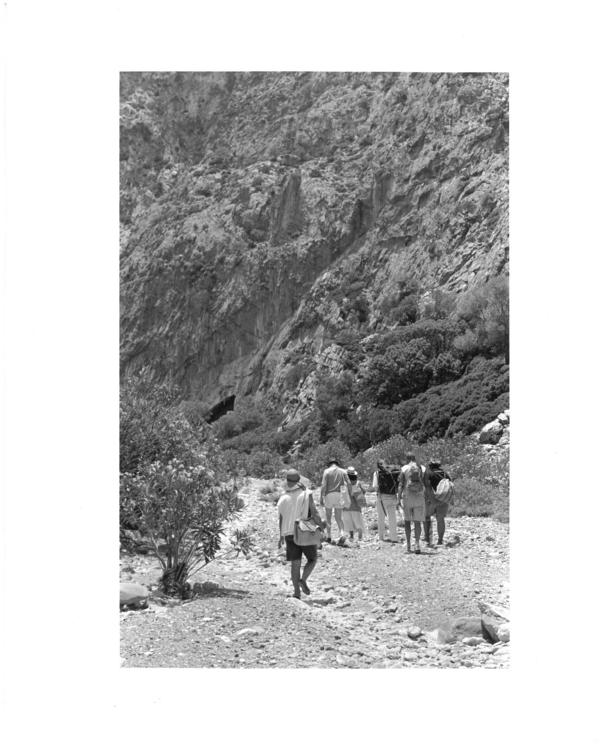
The start of the descend into the canyon
Walk through the canyon
Alight the bee
Afoot the poets
Elongated the path
Heavy the things
Long stretch to the sea
Mountain sides witness
Birds are startled
One cough echoes off
High rising rock formations
Leaving spaces in between
To walk through, to walk on
Along the way caves stirred the imagination and the curiosity. The question exist what else lives during day time inside and comes out only at night? Thus magic moments are created when the moon shines upon the sea now calmed down since the winds went off to rest. And somewhere there barks a wild dog and once closer to the sea, there can be heard the faint sound of ship's motor when the men from the village go out late to fish.
The cave of mystery
The daughter of one of the guides
While walking through the canyon on the way to the sea, the group came upon a church. What a strange place to have constructed such a house of religion. Spontaneously it was said here is a place to take a group photo of secular poets all having different views.
The group photo is simple evidence who was there at the time
After that we found our way to where the canyon opens up to the sea. A small beach awaited us. While some went immediately swimming, others started to prepare the food by setting up a complete outdoor kitchen. The many heavy things carried especially by the guides came now into use.
One thought many dreaded the most: the thought of having to walk up again through the entire canyon to get back to the car where we were dropped off. But our guides had another plan. A fishing boat came to pick us up and to take us back to a pier from where we could easily reach the road leading back to Kamilari.
The Phaisos discussion I
The Phaistos discussion I relates to the question what ancient ruins can tell to those living in the present and wondering how they managed in the past to create such a beautiful palace. Phaistos had a foundation made out of stone but the rest was constructed out of wood. This was done out of fear of earthquakes, and still the fate of Phaistos was to be destroyed by a powerful earthquake.
Emer Ronan presenting poetry and myth out of the Irish perspective.
Since the people of Kamilari operated at that time a canteen in Phaistos, they hosted the group of poets for a special discussion about present, past and future in terms of poetic visions, so as to understand and to come to terms with the plight of mankind.
While sitting down one late afternoon in a taverna, the news reached the group that a fire had broken out and the village of Kamilari was threatened by huge flames. Always rumours are spread not by the winds but by those who love to exaggerate when creating the usual images of horror with the aim to electrify the audiences into listening to the poems. After some controversial discussions, and after having send out one person to inquire if we could be of any help, we decided on the basis of the village's mayor to stay put as best support to do what was on the table: food to be eaten and to be enjoyed. Soon thereafter the news reached us as well that the fire had started at a rubbish dump and has now been extinguished.
Text: Hatto Fischer
Photos: Elena Sheehan
« Poets and Myth of Europe 1994 | The poetics of life versus the poetics of death by Katerina Anghelaki Rooke (1994) »

